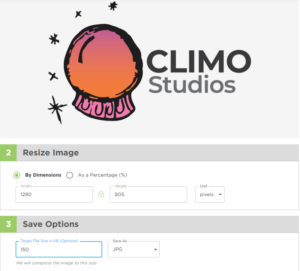Website Maintenace
A key part of the success of every website is its long term functionality and website maintenance. Your website won’t work for you if you don’t give it the attention required, think of owning/running a website as working on an old car, it’s all very fiddly, there are new changes in the industry 24/7 and sometimes Google just likes to switch up how they compile search results. I believe because of those points and many more that anyone who owns a website should know the basics to keep everything in check, and with that let’s begin!
Plugins/Addons/Etc
No matter what platform you are using you most likely have plugins. Plugins are a great way for us developers to save plenty of time, like in the birth of civilization we started to specialise in different things such as farming, accounting etc. This is the same with plugins we now live in such a diverse web world that people can spend their whole life dedicated to making the perfect payment portal, god bless them.
Where people go wrong with this is not updating them, I cannot stress how important it is to keep your plugins and themes up to date. Updates can include useful bug fixes and new features or quell security flaws or weaknesses in the code, nothing in the web world is set and forgotten!
So how do we update our plugins? Well, it is usually quite simple, for my examples, I will be using WordPress as it’s my personal favourite but the same ideas and fundamentals will work on any platform! Okay so when you go to “your-site/wp-admin” or the dashboard you will be able to see the sidebar, all we need to do is hover over “Dashboard” and click updates. Here we will be able to find if there are any plugins or themes that need updating. Updating is usually quite safe but I would still recommend taking a backup beforehand with a plugin such as UpDraft Plus which has a free version that will make sure you don’t lose any data.
Backups
On the note of possibly losing data let’s talk about backups. I personally use Updraft Plus for my backups but any high rated backup plugin or service will work, just make sure to read the reviews and know that you can trust it. With UpDraft we can set up automatic weekly backups, send backups to storage places like Dropbox or Google Drive and we can restore right from inside WordPress. UpDraft has a great in-depth guide on their website linked here.
Media Library Discipline
As annoying as it can be I cannot stress enough how important it is to size and control the media on your website. As standard I would say to stick with .jpg images, there are tones of converters online but the next step can save you on that too. We use a simple web app called “Image Resizer” which gives us full control of the dimensions, file type and size. Here is an example photo:

Here we can see the options I have used and recommend. First off let’s talk dimensions, as a rule of thumb I always say anything that is full width on your website should be 2560px wide (the height will be auto-calculated depending on the aspect ratio of the image) while anything else used should be 1280px wide. The size is the main point of this and we make good use of the .jpg compression algorithm, we want to set our target file size >200kb ideally sitting around 100kb, while depending on the detail and colour work your results may vary it will always be better than slapping it on your website and hogging bandwidth.
Performance Tuning & General Website Maintenance
Performance can really make or break a website, badly performing websites always trend to worse click-through rates and Google taking a bad eye to your SEO. While performance is always thrown around as a super complex process there are some easy steps to take to get major improvements. This is a key part of website maintenance.
To start I would say that good media discipline is the #1 priority, we are measuring response times in milliseconds so you can just imagine what a 7Mb file would do to that… Next while not always possible especially for the end-user we would highly recommend going with a trusted and semi-local web hosting company. There are many good options and in somewhere like New Zealand it is just more financially viable to get a server in Syndey but the performance will still be massive compared to the States. So the end of the story is don’t go for the cheapest option!
The last tip for good performance on WordPress is to make sure you have a clean website, we want to keep our plugins, themes and draft content to a minimum. If you have a plugin that can do something your using another one to get rid of it and try cutting down on plugin spam as this can be a real issue. Once your website has been made it would be common practice to remove any unused themes as well. This can be done by going into appearance > themes from the WordPress dashboard. If you feel hesitant contact your website company and get them to make the changes you want, should only be a 5-minute job. The last tip for performance is to get rid of draft content. This can be posts or pages, anything goes. If you arent going to use it or need it later, delete it!
My final and last piece of advice for today is to get involved in the community, I’m not saying go to meetups and stuff but just joining some Facebook groups or Reddit forums is really helpful to get your footing in the webspace. These people are usually very lovely and are always willing to help, just be careful of upsellers, it’s a business after all 😉
Thank you so much if you have read down to here, comment if you like what you have read or have anything to add below. This is Jason signing off, have a great day!

0 Comments